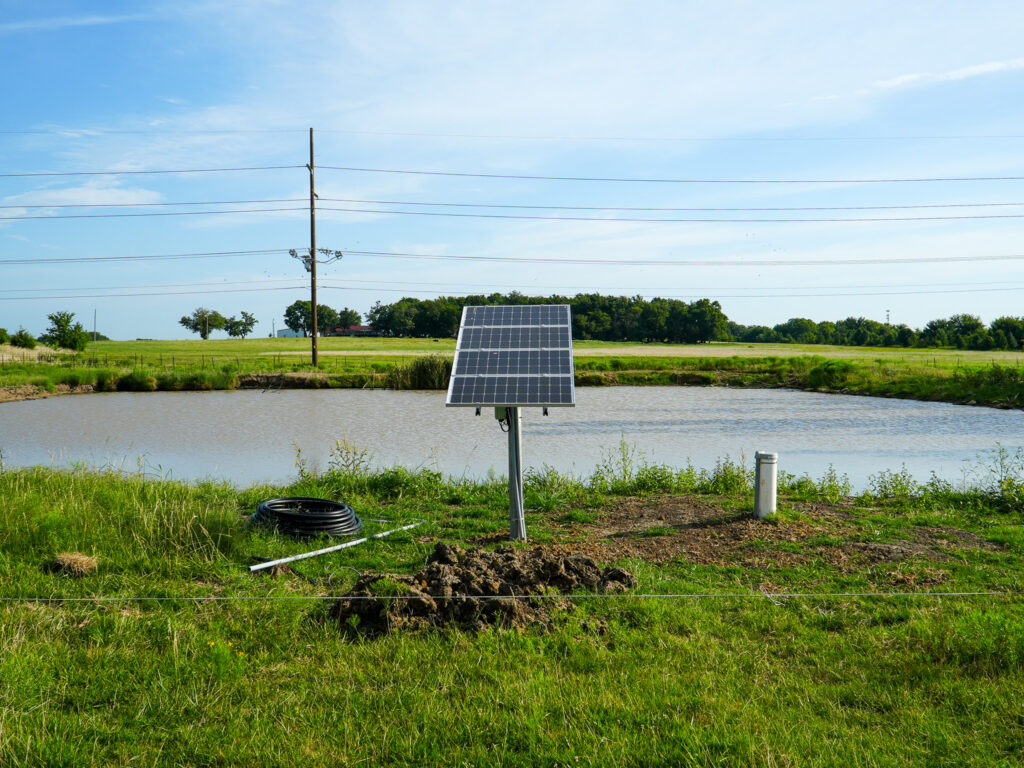Turning Setbacks into Success: The Journey to Better Drinking Water in Oklahoma

On the sprawling plains where tradition meets innovation, a pioneering cattle rancher is harnessing the power of the sun to revolutionize livestock care with an experimental solar-powered pond filtration system that promises clean, sustainable water for his herd.

Meet David McCollough, a cattle rancher living in Pryor, Oklahoma. David’s parents bought this land over 40 years ago after moving here from north Missouri, but now, David is overseeing operations. While practices on the farm have changed and evolved over the past four decades, caring for the land is still at the heart of this operation.
Over the last 20 years, David has tried various projects to protect natural resources and improve the long-term economic success of the farm. Since partnering with USDA’s Natural Resource Conservation Service (NRCS), David has received financial and planning assistance through the NRCS-administered Environmental Quality Incentives Program (EQIP) and later through the Conservation Stewardship Program (CSP). Through CSP, NRCS offers annual payments for implementing enhancements and operating and maintaining existing conservation efforts.
David’s primary concern right now is getting water to the cattle on his southern plot of land. In 2009, through EQIP, NRCS designed a livestock ramp for David’s cattle to access his pond. The ramp worked well for a couple of years, but eventually gave out due to excessive erosion because the geotextile and rock sloughed into the pond, leaving David in need of a new solution for keeping his cattle watered.

Trying Something New
In came Cambra Fields, NRCS Oklahoma District Conservationist, who helped David weigh the pros and cons of a few different solutions. One option she suggested was trying a wet well, which would require either a solar or electric-fed system to push water to a water facility. Since David doesn’t have electricity within the immediate area, he decided first to try a solar-fed water filtration pump system. The system uses the sun’s energy to pump the pond’s water and feed it into a tank on the south plot of land. Though slightly wary, David agreed to try a new process and see how it would affect his daily land management.

Since then, the contractor has laid pipe work and installed a wet well, filter system, and a solar panel. David attributes the hard work of his contractor, who installed the solar pump and set the panels, Larry Coppock, an Engineer with Agriculture Conservation Experienced Services (ACES), who designed the pumping system, and Cambra Fields, who provided guidance and oversaw operations, with the success of the project so far. Now, all that’s left to do is install the tank that will hold the water for the cattle and see how well the new system will work.

A Voice for Change
David remains hopeful that the system will help him save on production costs and teach him new ways of looking at things. “We have different problems over here in Northeast Oklahoma than they do in Western Oklahoma, so our solutions are going to look different,” David tells me. “With every managerial change, I’ve learned that it’s going to change how you manage upcoming situations that you can’t even anticipate.”
Through his position as Chairman on the Board of Directors at Mayes County Conservation District, which he joined in 2004, David hopes to help fellow producers in his community look at the various conservation programs available to them and help them understand the risks and benefits of applying them to their land. “I think sometimes people get comfortable doing the same things, because they’re scared of the unknown, but we don’t farm the way we did twenty years ago, so changes are often necessary.”
More Information
USDA offers a variety of risk management, disaster assistance, loan, and conservation programs to help producers weather ups and downs in the market, recover from natural disasters, and invest in improvements to their operations. Learn about additional programs.
For more information about USDA programs and services, contact your local USDA service center.
